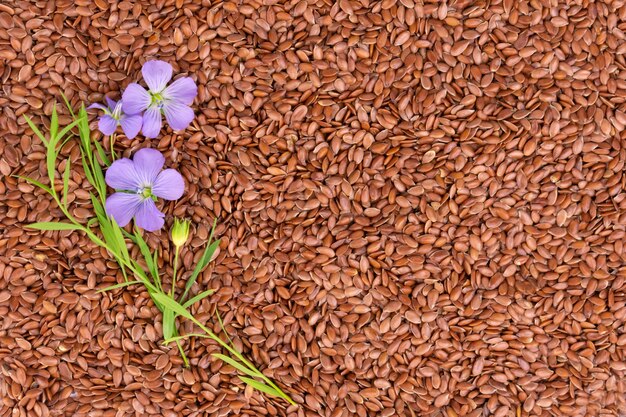Flaxseeds (Linum usitatissimum) have gained popularity worldwide due to their nutritional value and versatility in the food, cosmetic, and textile industries. In South Africa, the potential for growing flaxseeds is promising, especially with the right knowledge on land preparation, growth stages, pest and disease management, and harvesting techniques. This guide will provide detailed information on each stage of growing flaxseeds, including inputs, machinery, soil types, fertilizers, water requirements, and pest control measures.
1. Land Preparation
Soil Type
Flaxseed grows best in well-drained loamy or clay-loam soils with a pH of 5.5 to 7. However, it can tolerate slightly alkaline soils. It’s essential to avoid waterlogged soils, which can stunt growth and cause root rot. Ensure that the soil is rich in organic matter and free of stones or debris.
Tillage and Land Preparation
Start by clearing the field of weeds, rocks, and any leftover plant material from previous crops. Flaxseeds have shallow roots, so proper seedbed preparation is key. The following machinery may be used:
- Plow: Breaks up the soil to a depth of about 15-20 cm.
- Harrow: To level and smooth the seedbed for even seed placement.
- Rotavator: Helps to further break down large soil clods, creating a fine and firm seedbed.
Aim for a seedbed that is firm and well-drained, allowing easy root penetration and moisture retention.
2. Sowing Flaxseeds
Sowing Time
In South Africa, flaxseeds are typically sown in the late summer or early autumn, depending on the region’s climate. The cooler months provide the ideal growing conditions for flax, as temperatures between 10°C and 27°C are optimal.
Seed Selection and Planting Rate
Choose high-quality flaxseeds from a reputable supplier to ensure good germination rates. A planting rate of around 20-30 kg per hectare is typical, depending on the seed variety and soil fertility.
Planting Depth and Spacing
Flaxseeds should be planted at a depth of 1.5 to 2.5 cm to ensure good seed-to-soil contact. Maintain row spacing of about 15-25 cm to allow for airflow and reduce the risk of fungal infections. A seed drill is ideal for even seed placement and depth control.
3. Growth Stages
1. Germination (7-10 Days)
- Inputs: Regular irrigation is necessary to keep the soil moist but not waterlogged.
- Fertilization: Apply a starter fertilizer rich in phosphorus (P) to encourage root development. A general recommendation is 40-60 kg/ha of P2O5.
- Water: Moderate irrigation (10-15 mm per week) during this stage.
2. Vegetative Stage (3-5 Weeks)
- Water: Increase water supply to 20-25 mm per week. Flaxseeds require consistent moisture for good growth but be cautious of overwatering.
- Fertilization: A balanced fertilizer (NPK) can be applied, with nitrogen (N) being crucial for vegetative growth. Aim for a nitrogen application of 50-70 kg/ha, depending on soil fertility levels.
- Weed Control: During the vegetative stage, weeds can compete with flax for nutrients. Apply a pre-emergence herbicide after planting or spot-treat with selective herbicides as necessary.
3. Flowering Stage (6-8 Weeks)
- Water: Maintain a consistent water supply, 25-30 mm per week. This stage is critical as water stress can reduce seed production.
- Fertilization: Top-dress with additional nitrogen (40-50 kg/ha) to sustain the crop during flowering.
- Pest Control: Flax plants are susceptible to aphids and thrips during this stage. Monitor regularly and apply insecticides when necessary. Organic options include neem oil, while chemical control may require pyrethroids or carbamate-based pesticides.
4. Seed Development and Maturation (9-12 Weeks)
- Water: Reduce water supply during the seed maturation phase to avoid lodging and fungal diseases. Watering of around 15-20 mm per week is sufficient.
- Fertilization: Avoid additional fertilizer at this stage to prevent unnecessary vegetative growth, which could reduce seed yield.
- Pest and Disease Management: Diseases like flax rust and powdery mildew can occur. Apply fungicides (triazoles or strobilurins) at the first sign of infection to prevent spread. Rotating crops and planting resistant varieties can also help manage these diseases.
4. Fertilizer Requirements
- Nitrogen (N): 50-120 kg/ha based on soil test results. Nitrogen boosts vegetative growth but should be carefully managed to avoid excessive foliage that reduces seed yield.
- Phosphorus (P): 40-60 kg/ha to support root development.
- Potassium (K): 60-80 kg/ha for overall plant health and seed formation.
- Micronutrients: Ensure adequate levels of boron and zinc, which are important for seed formation and plant growth.
Soil tests before planting are highly recommended to determine the exact fertilizer requirements and avoid under- or over-application.
5. Water Requirements and Frequency
Flaxseeds require moderate water throughout their growth stages. Typically, they need around 400-500 mm of water for the entire growing season. Ensure that the soil is kept consistently moist, but avoid waterlogging. Here’s a general guideline for water needs:
- Germination: Light irrigation (10-15 mm/week).
- Vegetative and Flowering Stages: Moderate irrigation (20-30 mm/week).
- Seed Development: Gradually reduce watering to avoid issues with seed rot and lodging.
Drip irrigation systems are ideal for flaxseeds, as they provide targeted water to the roots and minimize wastage.
6. Pest and Disease Management
Common Pests
- Aphids: These small insects can suck sap from plants, causing stunted growth. Use neem oil or pyrethroid insecticides to control infestations.
- Thrips: Thrips feed on the plant’s leaves and flowers. Control with insecticides or biological agents such as predatory mites.
- Cutworms: These pests damage seedlings by cutting through stems at ground level. Monitor the soil and use baited traps or targeted insecticides if needed.
Common Diseases
- Flax Rust (Melampsora lini): A fungal disease that affects leaves and stems, causing yellow-orange pustules. Fungicides such as triazoles can be effective.
- Powdery Mildew: White, powdery spots on leaves and stems are a sign of powdery mildew. Control with sulfur-based fungicides.
- Root Rot (Fusarium spp.): Waterlogged soils are the main cause of root rot. Ensure good drainage and avoid overwatering.
7. Harvesting Flaxseeds
Flaxseeds are typically ready for harvest about 90-120 days after planting. When the seed capsules turn brown and the stems start to yellow, the crop is ready for harvesting.
Machinery
- Combine Harvester: A combine harvester can be used to collect the seeds. Adjust the settings to prevent damage to the delicate seeds.
- Swather: In areas prone to lodging, use a swather to cut the plants and allow them to dry before combining.
8. Post-Harvest Storage
Flaxseeds should be dried to a moisture content of 8-10% to prevent spoilage. Use mechanical dryers or air-dry the seeds in well-ventilated areas. Once dried, store the seeds in clean, dry, and pest-free containers. Silos or airtight bins are ideal for long-term storage.
Growing flaxseeds in South Africa can be a rewarding endeavor, provided the proper techniques are followed from land preparation to harvesting and storage. By ensuring that the right inputs, machinery, and pest management strategies are employed, South African farmers can achieve high yields and produce top-quality flaxseeds for both local and international markets. With attention to soil health, water management, and timely pest control, flaxseed farming can become a sustainable and profitable agricultural venture.







